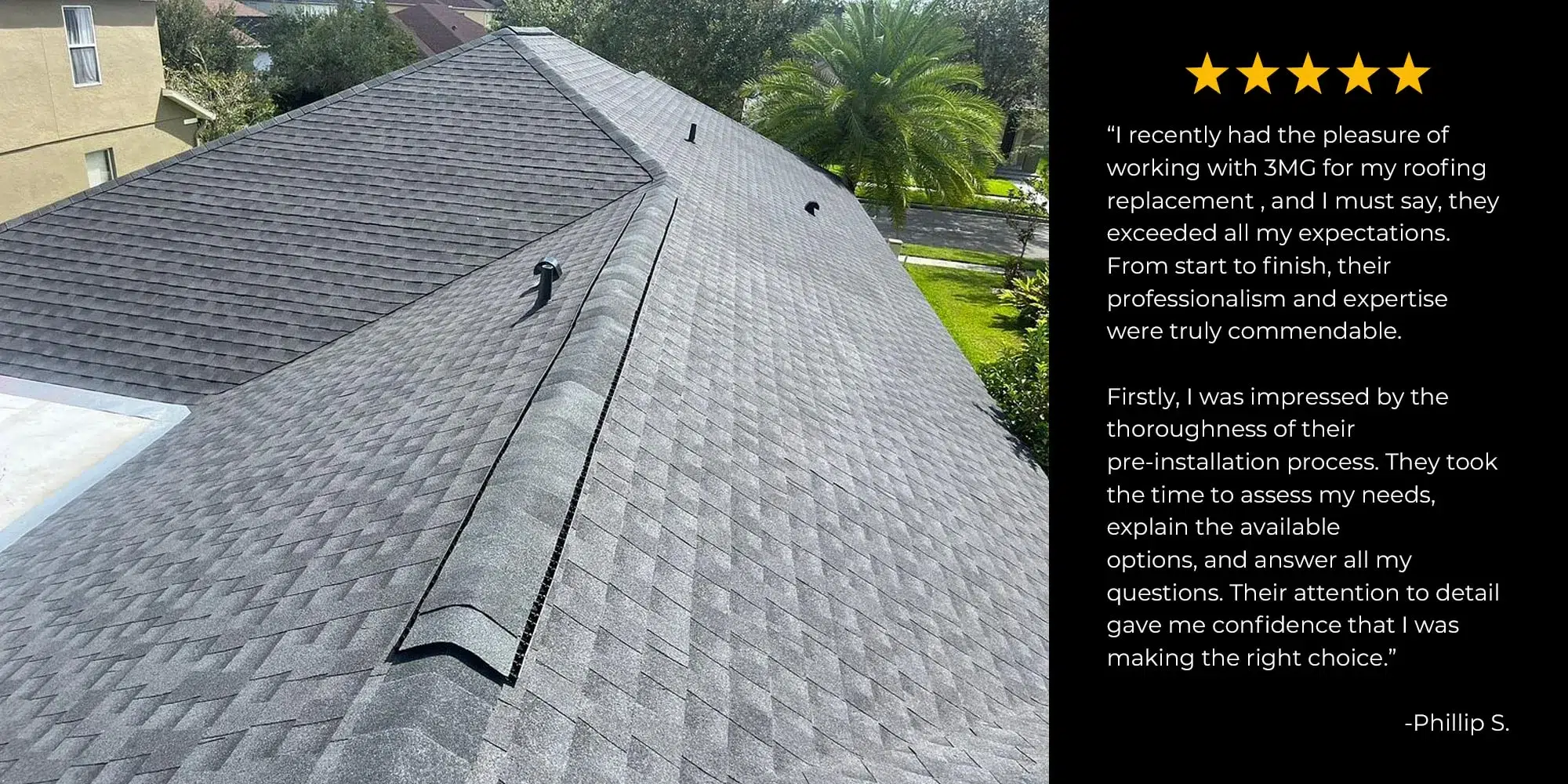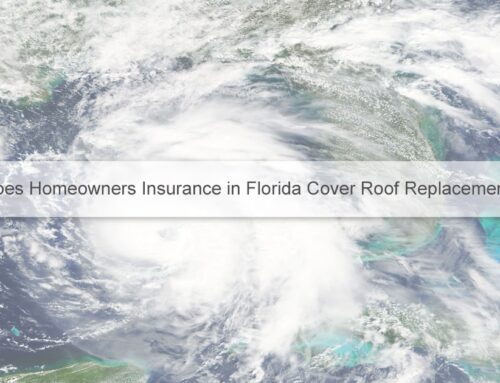TOP RATED ROOFER
833-372-ROOF
How Building Codes Affect Your Roof Replacement
A Guide for Homeowners

Building codes serve as crucial guidelines that ensure the safety, durability, and quality of construction projects. They are a set of rules or standards that builders and contractors must adhere to when constructing or renovating buildings, including roof replacements. These codes are not just arbitrary rules; they are developed based on careful research and analysis of various factors such as structural integrity, fire resistance, and weather resilience. Understanding the importance of building codes is essential for homeowners planning a roof replacement, as these codes dictate the materials, techniques, and standards that must be used.
In the context of roof replacements, building codes play a significant role. They determine the minimum standards that must be met to ensure the safety and durability of the new roof. These standards cover a wide range of aspects, from the type of materials that can be used, and how those materials are installed, to the maximum weight that the roof can support. For example, if you live in an area prone to high winds or hurricanes, building codes may require your roof to be able to withstand certain wind speeds. Similarly, in regions with heavy snowfall, the roof must be able to bear the weight of accumulated snow. Therefore, understanding how building codes affect roof replacements can ensure a successful, compliant, and safe renovation project. Entrust your roof replacement to the expertise of 3MG Roofing & Solar in Winter Park, FL, where our professionals guarantee meticulous adherence to local building codes.
What are Building Codes?
Building codes, in their most basic form, are a set of rules and regulations that govern the construction, alteration, and maintenance of structures. They are designed to establish a uniform standard of practice to ensure the safety, health, and general welfare of the people living in or around these structures. The codes encompass various aspects of construction, ranging from structural integrity, fire resistance, accessibility, energy efficiency, and in this context, the standards for roof replacement.
Regulatory Framework
The underlying purpose and importance of building codes cannot be overstated. They serve as a regulatory framework to ensure that all structures, irrespective of their design or purpose, adhere to a minimum level of safety and quality. In the realm of roof replacements, these codes dictate the type of materials to be used, the method of installation, the weight capacity of the roof, and other key factors. Failure to comply with these building codes can lead to severe repercussions, including fines, demolition orders, and even legal action. The safety and stability of a building largely depend on its adherence to building codes.
For instance, in the case of roof replacement, the codes would specify the type of underlayment required for a particular roof covering material, the slope of the roof, or the maximum weight a roof can bear. These specifications ensure that the roof can withstand local weather conditions, support the weight of any equipment installed on it, and provide adequate insulation and ventilation. By adhering to these codes, homeowners can rest assured that their roofs are structurally sound, safe, and capable of withstanding the test of time.
Understanding Building Codes for Roofs
Familiarize Yourself with Specific Codes
The first step towards understanding how building codes affect your roof replacement is to familiarize yourself with the specific codes related to roofs. These regulations vary markedly across different jurisdictions, but they all serve the same essential purpose – to ensure that roofs are constructed to be safe, durable, and resistant to the elements. Some codes might dictate that roofs must be able to support a certain amount of weight, or that they need to have a specific slope for efficient drainage. Other regulations might outline the types of materials that can be used, or establish requirements for ventilation and insulation. These codes inevitably impact the materials, design, and construction of roofs. For instance, if a building code specifies that a roof must be able to bear a certain load, this could rule out the use of certain lighter materials.
Similarly, if a code requires a specific degree of fire resistance, this would influence the selection of the roofing materials. Design aspects such as roof pitch, eave length, and the use of additional features like roof vents or chimneys, will also be affected by local building codes. The construction process itself, including techniques and safety measures, must adhere to these codes to ensure the roof’s integrity and longevity.
Enhancing Resistance and Energy Efficiency
Building codes also play a pivotal role in enhancing a roof’s weather resistance and energy efficiency. These regulations often consider the local climate, ensuring that roofs can withstand typical weather conditions such as high winds, heavy rains, or snow loads. For example, in a region prone to hurricanes, building codes may require roofs to have wind-resistant features. As for energy efficiency, many building codes now require certain levels of insulation or the use of energy-efficient materials to reduce heat transfer, which can significantly lower your heating and cooling costs.
Overall, building codes are invaluable guides to roof replacement. They may seem complex and rigorous, but ultimately, they ensure that roofs are safe, durable, and energy-efficient. Compliance with these codes not only avoids legal troubles but also results in a long-lasting, cost-effective roof that can withstand the test of time and weather.
Consequences of Not Adhering to Building Codes
Threat to Safety and Structural Integrity
Non-compliance with building codes, particularly in the context of roof replacement, carries a multitude of risks. The most apparent risk is the threat to safety and structural integrity. Building codes are established to ensure the durability, stability, and safety of structures. Ignoring these guidelines could lead to the construction of an inadequately protected roof, unable to withstand adverse weather conditions, resulting in potential damage or even collapse.
Hefty Fines and Penalties
Furthermore, non-compliance could lead to hefty fines and penalties from local or state authorities. These fines can vary depending on the jurisdiction and the severity of the violation, but they are invariably an unnecessary expense that can be easily avoided by adhering to building codes. Regular inspections by code enforcement officers can lead to the discovery of non-compliant structures, and repeated violations could even result in legal action.
Impact the Property’s Value and Insurance
Non-compliance with building codes can also negatively impact the property’s value and insurance premiums. A roof that doesn’t meet building code standards may be seen as a liability by prospective buyers, decreasing the property’s market value. Moreover, insurance companies may increase premiums or even deny coverage for properties with non-compliant roofs, as they represent a higher risk of damage and subsequent claims.
In conclusion, while building codes may initially seem like an extra layer of complexity in a roof replacement project, the consequences of not adhering to them could be far more inconvenient and costly. It is vital to understand these codes and ensure that any roof replacement project complies with them fully to avoid potential safety hazards, financial penalties, and negative impacts on property value and insurance.
The Process of Roof Replacement Under Building Codes
Obtaining the Necessary Permits
Roof replacement is an intricate process, and the complexity increases further when it is performed by local building codes. The first step in this process is obtaining the necessary permits. The application process for these permits often involves submitting detailed plans of the proposed work and paying a fee. These permits are not just paperwork; they are a crucial part of ensuring the project’s safety and structural integrity. They confirm that the planned work conforms with local building codes, thus protecting homeowners from the penalties associated with non-compliance.
Building Inspector
Working with a building inspector is another integral part of the roof replacement process. Following the permit’s approval, an inspector makes an initial visit to assess the project’s compliance with the building codes. The inspector’s role is to ensure that the project is executed as per the approved plans and that it adheres to all safety standards. Upon completion of the roof replacement, a final inspection is conducted to certify the project’s compliance. Failure to pass this inspection can lead to legal complications and potential fines.
Contractor that Implements Building Codes Effectively
However, the onus of ensuring the project’s adherence to local building codes does not solely rest on the inspector. The chosen contractor should have a robust understanding of these codes and the ability to implement them effectively. When hiring a contractor, homeowners should confirm their familiarity with local building codes to avoid potential complications. The contractor is responsible for ensuring that all materials and techniques used during the roof replacement are compliant with these codes. Failure to do so can jeopardize the project’s success and lead to substantial penalties. Ensure your roof replacement adheres to building codes by reaching out to 3MG Roofing & Solar.
In conclusion, the process of replacing a roof under building codes involves obtaining the necessary permits, working with an inspector, and ensuring the contractor understands and follows the local building codes. A comprehensive understanding of these steps can help homeowners avoid the potential pitfalls of non-compliance. Contact
Local Vs National Building Codes
National Building Codes
When considering a roof replacement project, understanding the differences between local and national building codes is vital. These codes, designed to ensure the safety and structural soundness of buildings, vary significantly across different regions. National building codes, often referred to as ‘model’ codes, provide a basic standard of safety and construction practices. However, they are not legally enforceable until adopted by local jurisdictions.
Local Building Codes
Local building codes, on the other hand, are tailored to fit the specific needs and conditions of a given area. These codes may contain more stringent regulations due to unique factors such as climate, geography, or local history of natural disasters. For instance, a coastal town may have stricter codes regarding wind resistance for roofs due to the possibility of hurricanes. Therefore, homeowners must understand how these codes work in tandem and how their local codes may differ from the national model.
How to Find Building Codes
Finding and understanding the codes applicable to your area can seem daunting, but there are several resources available. Local government websites often provide access to current building codes, and some even offer guides to help homeowners understand them. For more complex projects, consulting with a local building or roofing contractor who is well-versed in these codes can be invaluable. They can help navigate the often confusing language of building codes and ensure your project is in full compliance, thereby avoiding potential fines or legal issues.
In conclusion, while national building codes provide a foundation, local codes are the final word in any roof replacement project. Understanding these differences and how to access the appropriate codes is a critical part of planning and executing a successful roof replacement project.
Conclusion
As we conclude this insightful exploration into the realm of building codes and their effect on roof replacement, it’s important to circle back to the key point: the absolute necessity of adhering to both local and national building codes. These codes are not simply suggestions or guidelines; they are the law. Ignoring or bypassing them could result in severe penalties, including fines and the potential dismantling of work done in violation of the codes. Beyond the legal implications, complying with these codes is a vital part of ensuring the safety and longevity of your home.
Building codes act as a protective shield for your investment. They ensure that all construction work, including roof replacement, meets a certain standard of safety and quality. This is particularly pertinent when it comes to the roof, the primary defense against environmental elements. A roof that is not up to code will not only degrade faster but can also pose significant safety risks, such as collapsing under heavy snowfall or high winds, or becoming a fire hazard.
Moreover, following building codes also ensures your roof replacement enhances the value of your property. Future buyers or appraisers will certainly take into account whether your home meets the local and national building codes. Falling short in this area could lead to a decrease in the property value or even make it difficult to sell the home.
In summary, understanding and adhering to building codes is not just a matter of legal compliance. It’s about protecting your investment, ensuring the safety of your home, and preserving its value. So, when planning a roof replacement, remember to take into account both the national and local building codes. It’s a step that pays off in the long run. Secure a professional and code-compliant roof replacement by choosing 3MG Roofing & Solar. Avoid legal complications associated with contractors who don’t adhere to local and national building codes.
SERVICE AREAS:
OFFICE LOCATIONS:
WINTER PARK
1127 Solana Ave
Winter Park, FL 32789
(407) 420-0201
TAMPA
6421 N. Florida Ave D-1500
Tampa, FL 33604
(813) 710-4001
STUART
2443 SE Dixie Highway
Stuart, FL 34996
PORT CHARLOTTE
12366 N Access Rd Unit 2
Port Charlotte, FL 33981
Contractor Licenses: CCC1334689 | CGC1534023 | 3MG ROOFING is a division of: 3MG SOLUTIONS, LLC | Solar installations performed by licensed third party contractors








